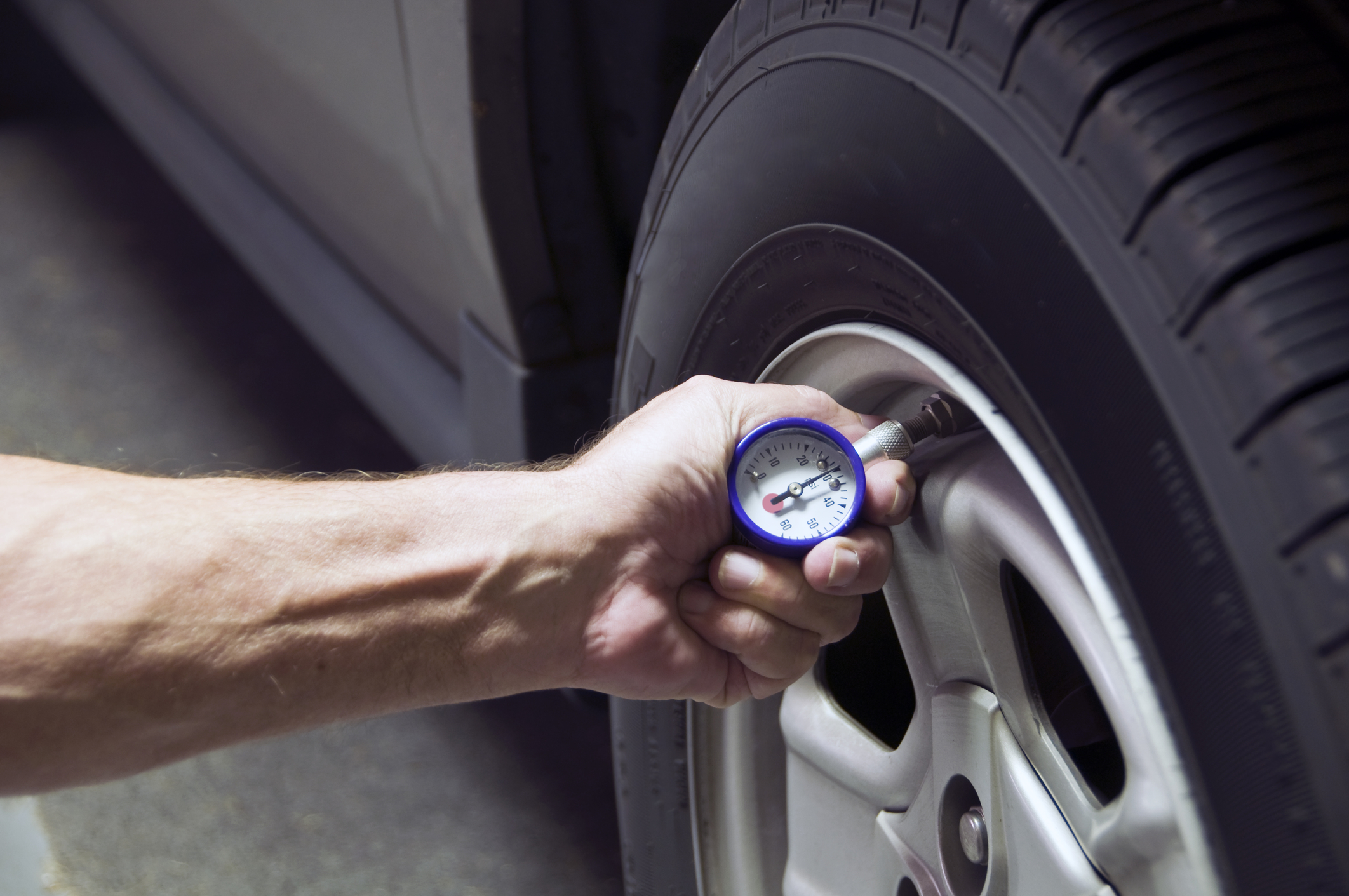How To: Check Tire Pressure

When you check the air pressure, make sure the tires are cool - meaning they are not hot from driving.
(Note: If you have to drive a distance to get air, check and record the tire pressure first and add the appropriate air pressure when you get to the pump. It is normal for tires to heat up and the air pressure inside to go up as you drive.)
-
Refer to your vehicle's owners manual for the proper level of inflation; it may also be posted on the door post or in the glove box.
-
When you check the air pressure, make sure the tires are cool - meaning they are not hot from driving even a mile. (Note: If you have to drive a distance to get air, check and record the tire pressure first and add the appropriate air pressure when you get to the pump. It is normal for tires to heat up and the air pressure inside to go up as you drive. Never "bleed" or reduce air pressure when tires are hot.)
-
Remove the cap from the tire valve, firmly press a tire gauge onto the valve and note the reading.
-
Add air to achieve recommended air pressure.
-
If you overfill the tire, you can release air by pushing on the metal stem in the center of the valve with a fingernail or the tip of a pen. Then recheck the pressure with your tire gauge.
-
Replace the valve cap.
-
Repeat with each tire, including the spare (Note: Some spare tires require higher inflation pressure). Check tire sidewall for recommended PSI.
<iframe width="560" height="315" src="https://www.youtube.com/embed/alPesd1hGtM?rel=0" frameborder="0" allow="autoplay; encrypted-media" allowfullscreen></iframe>
Here's Tire Terminology 101, courtesy the Rubber Manufacturer's Association.
Bead—Assures an air-tight fit with the wheel
Body ply—Gives the tire strength and flexibility
Interliner—Keeps air inside the tire
Sidewall—Protects the side of the tire from road and curb damage
Tread—Provides traction and cornering grip